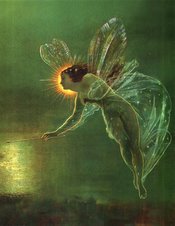Croome Park, was saved from being turned into a golf course, with the help from money from Lottery Hertiage Fund. The Court itself isn’t part of the trust, although I believe they are trying to negotiate buying some more of the land around the court, especially the Rotunda. The park was Lancelot ‘Capability’ Brown’s first complete landscape park. He worked with Scots Robert Adam and James Watt (see Soho House Blog) to produce buildings and features that still adorn the park today, some three hundred years later.
So that means you're in for yet more photos and another history lesson, aren't you lucky? No, don't answer that one! I've always found English history to be interesting, even as a child it fascinated me – I’ve said before that I spent a fair amount of my childhood wandering around the County museum. Now I can travel even further a field and visit places that I've only read about.
++++
The first church at Coome was mentioned in 1283, but an agreement was reached with the Bishop of Worcester and this was pulled down. The new church was designed by Brown and Adams and was dedicated in June 1763 to St Mary Magdalene. The monuments and graves from the previous church were moved to the new one.
 Thomas 1st Earl of Coventry (d. 1639). To signify his position as Lord Keeper of the Seal he is shown flanked by seated figures of Justice and Vitue.
Thomas 1st Earl of Coventry (d. 1639). To signify his position as Lord Keeper of the Seal he is shown flanked by seated figures of Justice and Vitue. The 2nd Earls wife, Mary (d.1634). She is shown holding a baby, indicating that she died in childbirth. Two small figures at her feet probably indicated two children.
The 2nd Earls wife, Mary (d.1634). She is shown holding a baby, indicating that she died in childbirth. Two small figures at her feet probably indicated two children.
 The field in front of the church was seeded with a mix of native English wildflowers and grasses.
The field in front of the church was seeded with a mix of native English wildflowers and grasses. The Temple Greenhouse was designed by Robert Adam in 1760 and housed the Earl's collection of exotic plants. In winter a fire was lit in the brick bothy at the rear and the heat was transmitted through voids in the paved floor.
The Temple Greenhouse was designed by Robert Adam in 1760 and housed the Earl's collection of exotic plants. In winter a fire was lit in the brick bothy at the rear and the heat was transmitted through voids in the paved floor.
 The dry arch bridge is also decorated by coade stone river-god keystones.
The dry arch bridge is also decorated by coade stone river-god keystones. 
 Brown designed the urn as a focal point for the parkland views.
Brown designed the urn as a focal point for the parkland views. The Island Pavilion & bridges. The Pavilion contains several coade plaques, with the central one depicted in a painting that hangs in the Vatican.
The Island Pavilion & bridges. The Pavilion contains several coade plaques, with the central one depicted in a painting that hangs in the Vatican.

 The Grotto (originally adorned with semi-precious gems, which would have sparkled and shimmered) and a monument to Sabrina, Goddess of the River Severn. No, not in honour of the TV witch, but after the mythical story of the drowning of a nymph. Water was channelled to the statue through hollowed out tree trunks and would have poured out of her urn into the rock pool below.
The Grotto (originally adorned with semi-precious gems, which would have sparkled and shimmered) and a monument to Sabrina, Goddess of the River Severn. No, not in honour of the TV witch, but after the mythical story of the drowning of a nymph. Water was channelled to the statue through hollowed out tree trunks and would have poured out of her urn into the rock pool below.



No comments:
Post a Comment